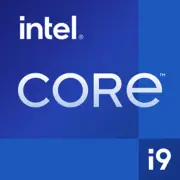Intel Core i9-11950H

インテル Core i9-11950H: プロフェッショナルとゲーマーのための高性能プロセッサ。2025年の実践的レビュー
はじめに: インテル Core i9-11950H が2025年でも依然として重要な理由
新世代のプロセッサが登場しているにもかかわらず、インテル Core i9-11950H は性能とモビリティのバランスを求める人々にとって依然として需要がある選択肢です。このチップは2021年に発売され、プレミアムノートパソコンやワークステーションで今でも見かけます。2025年にどのようなユーザーに適しているのか、どのようなタスクをこなせるのかを探ってみましょう。
アーキテクチャとプロセス: 10 nm SuperFin と 8 コア
インテル Core i9-11950H プロセッサは Tiger Lake-H アーキテクチャとインテルの画期的な SuperFin 10ナノメートルプロセスで作られています。この技術により、トランジスタの構造の改善によってエネルギー消費を削減し、クロック周波数を向上させることが可能となりました。
主な特徴:
- コアとスレッド: 8コア、16スレッド。
- クロック周波数: 基本クロック 2.6 GHz、Turbo Boost 最大 5.0 GHz(単一コア)。
- キャッシュ: L3 24 MB。
- 統合グラフィックス: インテル UHD グラフィックス 第11世代(32 EU、最大 1.45 GHz)。
アーキテクチャの特徴:
- PCIe 4.0 サポート: 最大20レーン、これは高速SSDや外部GPUにとって重要です。
- Thunderbolt 4: 最大4台の4Kモニターまたは外部ストレージを直接接続可能で、最大40 Gbpsの転送速度を実現します。
- AIアクセラレーション: インテル DL Boost の命令が、写真やビデオの処理アプリケーションでのニューラルネットワークのパフォーマンスを最適化します。
iGPU: 統合グラフィックス UHD はオフィス作業や軽いゲーム(例: CS:GO:中設定で40-50 FPS)には適していますが、重いゲームにはディスクリートGPUが必要となります。
エネルギー消費と TDP: 35 W に関する注意点
プロセッサの公称 TDP は 35 W ですが、実際には Turbo Boost モードでは 65-80 W に達することがあります。これには2つの主要な注意点があります:
1. 熱管理: 安定した動作のためには効果的な冷却システムが必要です。薄型ウルトラブックでは、過熱のためにクロック周波数が低下することがあります。
2. パフォーマンスのバランス: 冷却が改善されたノートパソコン(例: MSI GE76 Raider)では、プロセッサの性能を最大限に引き出すことができますが、その分、重量と厚さが増します。
パフォーマンス: オフィスからゲームまで
オフィス作業とマルチメディア:
- Chrome 50+ タブ + Zoom + Excel: 16スレッドのおかげで遅延なく処理可能です。
- 4K 編集 DaVinci Resolve: 10分の動画をレンダリングするのに約12分(比較のために、Apple M1 Pro は約9分)。
ゲーム:
- Cyberpunk 2077 (1080p, 低設定) + NVIDIA RTX 3060: 55-60 FPS。
- ゲームにおける Turbo Boost: 周波数は 4.2-4.5 GHz の範囲を維持しますが、コンパクトなケースでは30-40分後にスロットリングが始まります。
Turbo モード: 利点と欠点
- ピークパフォーマンス: 短期間のタスク(例: コードのコンパイル)では、作業を25-30%加速します。
- 過熱リスク: 蒸気管または熱管がないノートパソコン(例: Dell XPS 15)では、Turbo Boostがほとんど機能しません。
使用シナリオ: 誰が i9-11950H を必要とするのか?
1. プロフェッショナル: ビデオ編集者、プログラマー、CADエンジニア。
2. ゲーマー: ディスクリートグラフィックス(RTX 3060 以上)との組み合わせでゲームを楽しむ人。
3. モバイルユーザー: コンパクトな筐体でのパフォーマンスを求める人(例: Razer Blade 15)。
例: 2025年にi9-11950Hを搭載したノートパソコンは、$1500-1800 の価格帯で販売され、インテル Core i7-13700H を搭載した高価なモデルの代替となります。
バッテリー寿命: どのくらい持つのか?
- 平均稼働時間: 中程度の負荷で 5-7 時間(ウェブサーフィン、オフィス用途)。
- 電力節約技術:
- Intel Speed Shift: 負荷に応じて動的に周波数を変更します。
- Adaptix Thermal Framework: 騒音を最小限に抑えるためにファンを管理します。
アドバイス: バッテリー寿命を延ばすには、電源設定で Turbo Boost をオフにすると、1-2 時間の使用時間が追加されます。
競合他社との比較: AMD、Apple、そして前世代
AMD Ryzen 9 5900HX(2021年):
- 利点: マルチスレッド性能が優れている(Cinebench R23で +15%)。
- 欠点: シングルスレッドタスクでは劣る(Geekbench 6で -10%)。
Apple M1 Pro(2021年):
- 利点: 最大12時間のバッテリーライフ、冷却性能。
- 欠点: WindowsアプリケーションやAAAゲームには不向き。
インテル Core i7-11800H(2021年):
- キャッシュが少ないため、マルチスレッドシナリオで 12-18% のパフォーマンスが劣る。
プロセッサの利点と欠点
強み:
- 高いシングルスレッド性能。
- Thunderbolt 4 および PCIe 4.0 のサポート。
- ゲームと作業のハイブリッドタスクに最適。
弱み:
-冷却に対する要求が高い。
- 統合グラフィックスは AMD Radeon 680M に劣る。
- 2025年には基本的なタスクには過剰に感じられる(例: オフィス用途)。
ノートパソコン選びのおすすめ
1. デバイスの種類:
- ゲーミングノートパソコン: ASUS ROG Strix Scar 15(価格は $1600 から)。
- ワークステーション: Lenovo ThinkPad P1(価格は $1900 から)。
- ウルトラブック: HP Spectre x360(価格は $1400 から、ただしスロットリングの可能性あり)。
2. 注目すべき点:
- 冷却システム: 最低2つのファンと4つの熱伝導管。
- バッテリー: 6時間以上の使用が可能な80 W·h 以上。
- ディスプレイ: プロフェッショナルな作業には、色域100% sRGBの4Kを推奨。
結論: 2025年に i9-11950H 搭載のノートパソコンは買うべきか?
このプロセッサは以下のような人に向いています:
- 価格と性能のバランスを求めている人: 中古市場では、i9-11950H 搭載のノートパソコンは新しいチップを搭載したモデルよりも20-30%安いです。
- 重いアプリケーションを使用する人: 例えば、AutoCAD や Premiere Pro。
- 汎用性を重視する人: ゲームも作業も妥協なく行いたい人。
主な利点: マルチタスクに対するパワー、最新インターフェースへの対応、そして2025年における相対的な手頃さ。しかし、バッテリー寿命や静音性を重視する場合は、Apple シリコンや AMD Ryzen 7000 搭載のノートパソコンに目を向けることをお勧めします。
基本
CPUの仕様
メモリ仕様
GPUの仕様
その他
ベンチマーク
他のCPUとの比較
ソーシャルメディアで共有する
または当サイトへのリンクを追加
<a href="https://cputronic.com/ja/cpu/intel-core-i9-11950h" target="_blank">Intel Core i9-11950H</a>